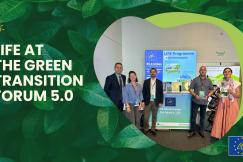News & articles
15 October 2025
Highlights from ECHA’s Member State Committee October meeting
News & articles
15 October 2025
Green transition
Login / create an account to be able to react
-
6

The ECHA’s Member State Committee has identified DBDPE as a substance of very high concern due to its very persistent and bioaccumulative properties, with plans to add it to the Candidate List in November 2025.
Editorial team
ECHA
Topics
Albania
Armenia
Austria
Belgium
Bosnia and Herzegovina
Bulgaria
Croatia
Cyprus
Czechia
Denmark
Estonia
EU-27
Finland
France
Georgia
Germany
Greece
Hungary
Iceland
Ireland
Italy
Kosovo
Latvia
Liechtenstein
Lithuania
Luxembourg
Malta
Moldova
Montenegro
Netherlands
North Macedonia
Norway
Poland
Portugal
Romania
Serbia
Slovakia
Slovenia
Spain
Sweden
Switzerland
Türkiye
Ukraine
Other
EU Institutions
-
Policy type
-
-
Green transition
-
Share
In its October meeting, the Member State Committee (MSC) agreed to identify 1,1'-(ethane-1,2-diyl)bis[pentabromobenzene] (DBDPE) (EC 284-366-9, CAS 84852-53-9) as a substance of very high concern (SVHC) because of its very persistent and very bioaccumulative (vPvB) properties. ECHA plans to add the substance to the Candidate List in November.
Besides the regular obligations following inclusion in the Candidate List, the identification of DBDPE as a SVHC will support the potential restriction work on brominated flame retardants. This SVHC identification is also aligned with the deadline for a possible transfer of the substance to the list of harmonised entries under the CLP Regulation.
The MSC also agreed in a written procedure on two substance evaluation cases and one dossier evaluation case.
Comments (0)
See also
Halting microplastic pollution with LIFE BLUE LAKES
- Categories
LIFE Programme draws the crowds at the Green Transition Forum 5.0
- Categories
Energy Union Task Force looks at readiness of energy networks
- Categories




